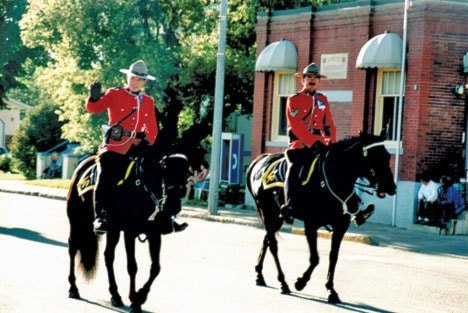As Stettler prepares to welcome back the excitement and energy of a major local rodeo after a break of several years, there are many expectations and curiosities as to what the event will bring and how it will be perceived by the town residents.
Inevitably, comparisons will be drawn with similar events currently taking place in neighbouring communities as well as with how things used to be done in Stettler before.
Experience will play a major part in how smoothly the events unfold and when it comes to experience, there is a wealth of it in town.
Foremost among those individuals who can speak with authority on the topic is Jack Chapman, a senior member of the legion and a parade marshall for many, many years.
“A parade must go passing by the hospital in town. People who are confined must have the chance to see what all the people in the streets can enjoy,” says Chapman, speaking of the fine points that any parade marshall must consider.
“We have always set the parade route to go through the west of the hospital so that people could see it.”
Chapman then moves on to giving information on what details have to be kept in mind in arranging a parade.
“A parade has to have sections,” he says, “children’s section, business section and other sections.”
“There should also be a minor prize for the people to enter, there needs to be some incentive for the people to enter the parade, otherwise they won’t enter,” he says.
According to Chapman, it is the duty of the parade marshall to ensure that the parade is pleasant to watch for the people lining the streets and that it is punctual.
“If it is set for, say, 11, it has to start at 11.”
He remembers how he tried year after year to see to it that there is no gap in the parade and it looks like a steady stream flowing without any hick-ups.
“Stettler has always had very good parades,” said Chapman.
“People always have been very cooperative, they brought different items to the parade and I was always happy as the parade marshall to form up the parade.”
Asked whether he had any picture of himself taken as a parade marshal, Chapman said he was never seen marching with the parade because he was always at the back end organizing those who are beginning to roll in.
Having been involved in the organization of so many parades and rodeos, Chapman stresses the importance of volunteer work in putting up such big community events.
“For a big rodeo organization, you have to have at least 50 volunteers.”
Recalling the days when Royal Canadian Legion members selflessly gave countless hours of their time to put together major community events, “We put the rodeo on for ten years in town,” says Chapman.
“But then we had many veterans helping us, and we had some good rodeos.”
Pointing to another important factor in the process of preparation, he recalls how they travelled to big stampedes and rodeos in other communities in the province to sign up competitors for the Stettler rodeo.
“We used to go to Ponoka, sign up all the contestants that would come to Stettler, arrange for the stock, arrange for the midway and when the time for the rodeo arrived, you would see all of these things coming together.”
“In essence, we catered to all the personnel that took part in the rodeo and they always came back because they got treated right.”
Asked for his expectations of the upcoming parade, Chapman said, “I still enjoy a good parade. But I wouldn’t have anything to do with it unless it went by the hospital.”
A very considerate proposition from a very experienced parade
marshall.
